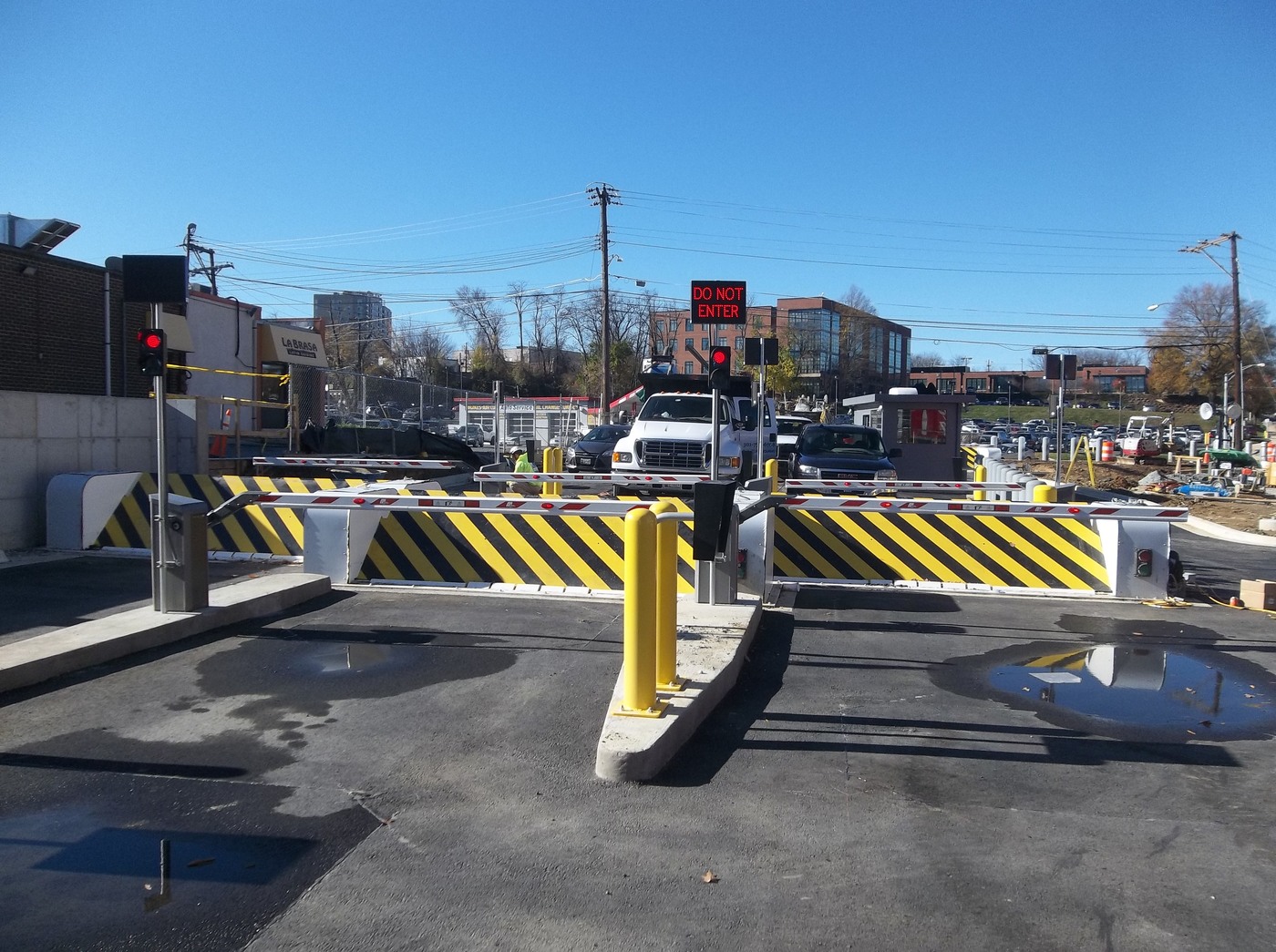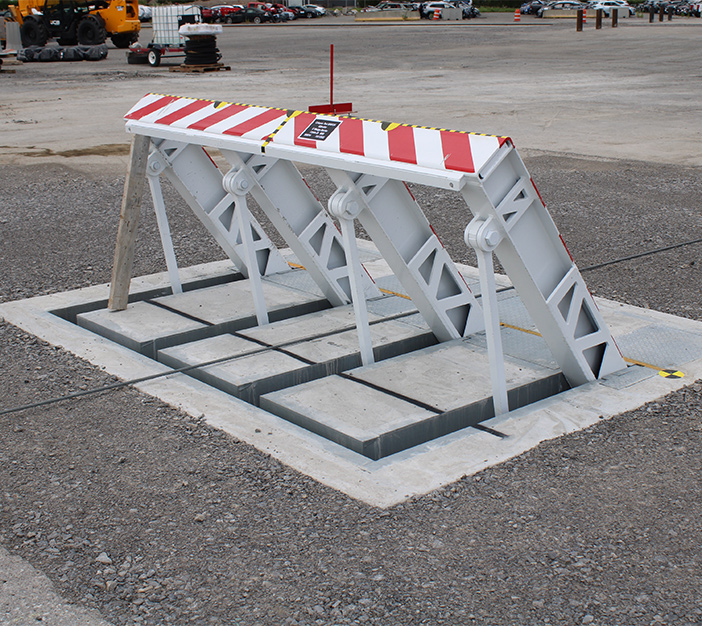Wedge Barriers Can Be Fun For Anyone

Getting The Wedge Barriers To Work
The remaining force applied to
the cam camera deploy the wedge plate 16 may might provided offered an electromechanical actuator 84 or other actuator. The springtime assembly 54 and the actuator 84(e. Wedge Barriers. g., electromechanical actuator)may run with each other to translate the web cam and lift the wedge plate 16.
As discussed over, the springtime setting up 54 puts in a constant force on the web cam, while the electromechanical actuator may be controlled to apply a variable pressure on the webcam, thereby making it possible for the training and lowering( i. e., releasing and withdrawing )of the wedge plate 16. In specific embodiments, the continuous force applied by the springtime setting up 54 may be adjustable. g., electromechanical actuator) is handicapped. As will be appreciated, the springtime assembly 54 might be covered and secured from debris or various other aspects by a cover plate(e. g., cover plate 68 received FIG. 4) that may be significantly flush with the elevated surface 38 of the foundation 14. As pointed out above, in the released setting, the wedge plate 16 offers to block accessibility or travel past the barrier 10. The obstacle 10(e. g., the wedge plate 16 )might block pedestrians or vehicles from accessing a residential property or pathway. As reviewed above, the barrier 10 is affixed to the anchor 30 protected within the structure 14,

front braces 71. Because of this, the link assemblies 72 might pivot and turn to enable the collapse and expansion of the affiliation assemblies 72 throughout retraction and implementation of the bather 10. The link assemblies 72 cause movement of the wedge plate 16 to be limited. For instance, if an automobile is traveling towards the deployed wedge plate 16(e. For instance, in one scenario, the safety and security legs 86 may be expanded throughoutmaintenance of the barrier 10. When the safety and security legs 86 are deployed, the safety and security legs 86 support the weight of the wedge plate 16 versus the surface area 12. Therefore, the training article mechanism 50 might be shut off, serviced, gotten rid of, changed, and so forth. FIG. 5 is partial viewpoint view of an embodiment of the surface-mounted wedge-style obstacle 10, highlighting the camera 80 and the camera surface areas 82 of the training mechanism 50. Particularly, 2 cam surface areas 82, which are referred to as reduced web cam surfaces 83, are positioned listed below the web cam 80. The lower camera surface areas 83 might be taken care of to the surface area 12 (e. For example, the reduced cam surfaces 83 and the installing plate 85 might create a single piece that is protected to the support 30 by screws or other mechanical fasteners. Furthermore, 2 web cam surfaces 82, which are referred to as upper webcam surface areas 87, are positioned above the camera 80 and paired to (e. In other personifications, stepping in layers or plates might be positioned between the surface 12 and the lower web cam surface areas 83 and/or the wedge plate 16 and the top cam surface areas 87 As mentioned over, the cam
80 translates along the cam surfaces 82 when the wedge plate 16 is lifted from the retracted position to the deployed position. Additionally, as discussed over, the springtime setting up 54 (see FIG. 3 )might give a pressure acting upon the webcam 80 in the direction 102 through springtime rod 58, which may minimize the force the electromechanical actuator 84 is needed to apply to the webcam 80 in order to actuate and lift the wedge plate 16. 1 )to the deployed placement(see FIG. 4). As revealed, the camera 80 includes track wheels 104(e. g., rollers), which contact and translate blog along the cam surface areas 82 throughout procedure.